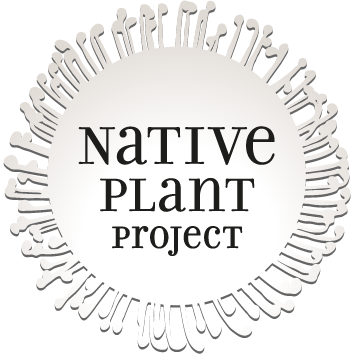- E-Nursery
- WINTER SALE
- Gardens
- The best of Australia’s private and public gardens to inspire your own Native Plant Project large or small.
- Learn
- Tips from native plant experts, growing guides, seasonal gardening diaries and more…
- Projects
- Meet designers, architects, landscapers and creatives engaged in their own native plant projects…
- About
- Contact
Cooking with Australian native ingredients goes well beyond ‘bush tucker’ for this Melbourne chef….
Greg Hampton is excited. He’s just discovered by accident a new native ingredient that’s bringing an almost un-definable taste to his sauces and sorbets at his hatted Melbourne restaurant, Charcoal Lane.
“A farmer in Tasmania was noticing his timber fences rotting in some spots, but not others – and where it wasn’t, an interesting shrub was growing,” says Hampton.
“So it was sent away for testing and it’s not only edible and delicious, but has anti-inflammatory qualities too,” he adds.


The recent discovery of kunzea ambugia as another edible indigenous plant (that brings flavours of tea, eucalyptus and hints of citrus to the dishes it infuses) speaks to Hampton’s quest to bring more native ingredients onto menus and into our daily lives.
“It’s been a long journey, but many Australian chefs are now starting to embrace native ingredients and you’ll even see things like finger limes appearing in the big name supermarkets”.
A chef for nearly 30 years, Hampton’s love affair with native ingredients was first ignited by meeting scientist Vic Chericoff in 1993, followed by Red Ochre chef, Andrew Felke – who both influenced his understanding of native flora, indigenous ingredients and how to combine these with classic cooking techniques. It even lead to Hampton returning to school to study Horticulture:
“I really wanted to understand how and where native plants grow,” Hampton reflects.
His profession has seen Hampton cook in top-notch kitchens around the country, but it seems he’s found the ultimate sweet spot with his role at top Melbourne diner, Charcoal Lane.
He’s cooking with the food he loves, with native ingredients front and centre – and sharing his knowledge.



Far surpassing bush tucker status, Hampton’s seasonal dishes capture the flavours of Australia with creative confidence. Ancient and arcane Indigenous nuts, fruits, meats and sea creatures feature on Charcoal Lane’s inventive modern Australian menu. Start with a paperbark smoked duck breast, served with yam puree, native ratatouille, candied beets, rosella + pear jus, salted pepperberry coral; a twice cooked jimba lamb shoulder is offered in a lemon myrtle infused red curry, confit shallots, roasted kipflers + coconut soft herb salad as a main dish, while a macadamia and chocolate torte with a side of rivermint ice-cream and chocolate meringue offers a sweet finish. A cocktail list brims with bold native botanical creations and there’s an impressive collection of wines, beers and ciders sourced from regional Australia too.
But Charcoal Lane does more than put Australian ingredients on the plate, it’s a training ground for Aboriginal and Torres Strait Islander young people.
Run as a social enterprise by Mission Australia in partnership with the Victorian Aboriginal Health Service, more than 30 Aboriginal young people per year are offered educational places to work in kitchen or front of house, connecting them to culture through native food, the local community and one another. And Hampton relishes the chance to teach and learn from his charges in the kitchen.
Set to celebrate its 10th anniversary in 2019, the Melbourne restaurant has seen over 50% of its students achieve full time work or higher education placement following the Charcoal Lane program.
“Using food and native ingredients provides a wonderful way to connect people, generate our students interest and put their culture in the forefront,” says Hampton.
“It’s motivation to keep going when you see how the industry and broader community support something like Charcoal Lane, give credit to our first people and you start seeing so much lost knowledge around our native food be shared.”














